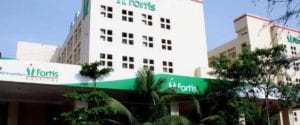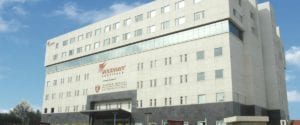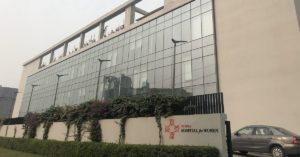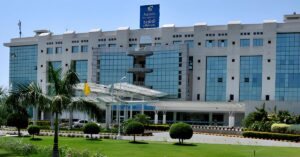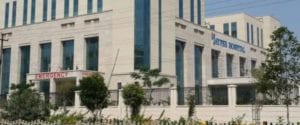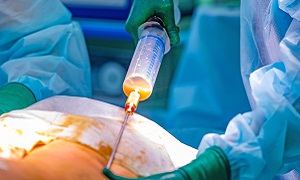Best Doctors in India for Fat Grafting
Best Hospitals in India for Fat Grafting
- City: Mumbai, India
Hospital Highlights:
- Fortis Hiranandani hospital was established in 2007.
- The hospital is an advanced tertiary care, multi-specialty hospital equipped with 149 beds.
- The hospital is equipped with a super ICU to provide emergency medical care to critically ill patients.
- The hospital is NABH accredited.
- The critical care facility in the hospital is augmented with the state-of-the-art facilities that facilitate speedier diagnosis and efficient monitoring.
- The hospital provides specialty medical services in cardiology, orthopedic science, pediatric science, neurology, diabetic care, urology, nephrology, ENT, obstetrics, gynecology, cosmetic surgery, bariatric surgery, neuro and spine care.
- City: Gurugram, India
Hospital Highlights:
- W Pratiksha Hospital, Gurugram, is one of the best hospitals in the NCR region. It is also a top hospital in India for IVF. Since its inception, the hospital has performed over 5500 successful IVFs. The hospital also specializes in gynecology.
- With over 20 years of experience in providing quality healthcare, the hospital is known as one of the most trusted and valued health providers in India.
- Equipped with world-class medical facilities and advanced technology, the hospital’s doctors and clinicians also have a track record of delivering excellent results. The hospital is also known for focusing on preventive well-being as much as on curative treatment.
- The hospital has earned the trust of its patients, by providing the best available treatments at affordable costs.
- City: Gurugram, India
Hospital Highlights:
- Paras hospital was established in 2006 and is the 250 bedded flagship hospital of Paras Healthcare.
- The is supported by a team of doctors of international and national repute.
- The hospital is NABH accredited and also the first hospital in the region to have a NABL accredited laboratory.
- The hospital provides specialty medical services in around 55 departments including Neurosciences, Joint Replacement, Mother & Child Care, Minimal Invasive Surgery, Gynecology and Obstetrics, Ophthalmology, Dermatology, Endocrinology, Rheumatology, Cosmetic and Plastic surgery.
- The hospital is equipped with state-of-the-art technologies.
- City: Kolkata, India
Hospital Highlights:
- Fortis Hospital, Anandapur, Kolkata is a world-class super-speciality equipped with the latest technologies in the medical world.
- The hospital is NABH accredited.
- This state-of-the-art facility specializes in cardiology and cardiac surgery, urology, nephrology, neurosciences, orthopaedics, digestive care, emergency care and critical care.
- The hospital, governed by integrated Building Management System (IBMS), has a pneumatic chute system, for quick vertical and horizontal transportation between floors, facilitating speedy transfer of patient specimens, documents, reports, and medicines to the concerned departments.
- The hospital also has a nephrology department with over 28 advanced dialysis units.
- City: Mumbai, India
Hospital Highlights:
- SL Raheja hospital is a 140-bed multi-specialty tertiary care hospital that is being managed by Fortis Healthcare Ltd.
- The hospital is a benchmark in healthcare and medical facilities in the neighborhood of Mahim & the western suburbs.
- L.Raheja Hospital, Mahim has one of the most effective ICU and Casualty care services.
- The hospital provides specialty medical services in Cardiology, Oncology, Neurology, Orthopedics, Mother & Child Care, and in Diabetes.
- City: Mumbai, India
Hospital Highlights:
- Wockhardt Hospitals were established in the year 1973, originally called First Hospitals and Heart Institute.
- Wockhardt Hospitals are super specialty health care networks in India, nurtured by Wockhardt Ltd, India’s 5th largest Pharmaceutical and Healthcare company.
- Wockhardt Hospitals is associated with Partners Harvard Medical International, an international arm of Harvard Medical School, USA.
- Wockhardt Heart Hospital performed India’s first endoscopic heart surgery.
- The hospital has a state-of-the-art infrastructure equipped with the latest technologies and modern equipment.
- It has special Centers of Excellence dedicated to the major specialties to provide hassle-free and high-quality clinical care.
- City: Gurugram, India
Hospital Highlights:
- The CK Birla Hospital in Gurugram is a NABH-accredited multi-specialty hospital.
- The hospital strives to increase the quality of healthcare by focusing on UK NHS nurse and midwife training requirements. Policies and practices derived from the National Institute for Health and Treatment Excellence (NICE) recommendations in the United Kingdom ensuring that a strong focus on safety, high-quality clinical care, and sanitation is maintained.
- The hospital’s cutting-edge technology and facilities allow for real-time communication and seamless collaboration among caregivers, ensuring accuracy and the best possible results. Those with foreign experience and accreditations make up part of the hospital’s team of clinicians.
- City: Ahmedabad
Hospital Highlights:
- As a member of the Apollo Hospitals Group, Apollo Hospitals International Limited, Ahmedabad is one of the most popular and sought-after medical facilities in Gujarat.
- Through its 6 Centres of Excellence and various affiliated branches, which cover all specialties and subspecialties, the hospital provides the most advanced clinical services.
- Since its inception in 2003, the hospital has been providing each patient with the most up-to-date medical equipment and state-of-the-art technology.
- With more than 150 successful organ transplants, including liver and renal transplants, the facility has been able to build a strong and extensive organ transplant program.
- In addition to performing 600 surgeries and caring for over 1800 patients on an IP basis, the hospital sees more than 18,000 patients on average in the outpatient department.
- With one of the biggest cardiology teams in the area, the hospital provides state-of-the-art regional care treatment in Cardiac Sciences.
- Additionally, the hospital offers a broad range of Neuro Interventional techniques to help stroke patients recover more quickly.
- City: Noida, India
Hospital Highlights:
- Jaypee Hospital is the flagship hospital of the Jaypee Group.
- This hospital has commissioned 525 beds in the first phase and has been planned and designed as a 1200 bedded multi-specialty facility.
- It holds the accreditation of the NABH and NABL.
- The hospital has state-of-the-art infrastructure equipped with the latest technologies and modern equipment like 64 Slice PET CT, Dual Head 6 Slice SPECT CT, Gamma Camera, and Da Vinci Robotic Surgery for comprehensive robotic surgical solutions.
- It has special Centers dedicated to the major specialties to provide hassle-free and high-quality clinical care.
- City: Mumbai, India
Hospital Highlights:
- Reliance Hospital is one of the best super-specialty care hospitals in Navi Mumbai.
- The main purpose of this hospital is to become a trustworthy place for the best health and hope for society. The hospital is well connected to the suburbs of Mumbai and Navi Mumbai.
- The hospital has various specialty departments, viz., Accident & Emergency, Anesthesiology, Dental Services, Dermatology, Diabetology, Dietetics Nutrition, Endocrinology, ENT, Gastroenterology, General Surgery, Gynaecology And Obstetrics, Hepato Pancreato Biliary Surgery, Infectious Disease, Internal Medicine, Interventional Radiology, Laboratory Medicine, Minimal Access Laparoscopic Surgery, Nephrology, Neurosciences, Opthalmology, Orthopaedics, Paediatrics, Pain Management Palliative Care, Physical Medicine Rehabilitation, Plastic And Reconstructive Surgery, Psychiatry, Pulmonary Medicine, Radiology, Rheumatology, Transplant, Urology Andrology, Vascular Surgery
FAT GRAFTING
Fat Grafting also referred to as fat transfer, is a procedure for transferring fat from one area of the body to a different area. The goal of this procedure is to improve or augment the area where the fat is injected.
The technique has been used since the 1990s by plastic surgeons for improving and enhancing the appearance of the face, hands, breasts, feet, etc. The procedure also has been shown to have benefits in the healing of wounds and scars.
Fat grafting procedures date back to the 19th century, though during the next century, it had quite a lot of trouble gaining acceptance due to the complications that accompanied the procedure since modern liposuctions had not yet been developed. Today, this procedure is well-established as during the 1990s, several papers were published where standardized techniques for fat extraction, processing and infection were published.
Purpose
Fat grafting can be done for multiple purposes:
Facial Face Grafting- Human faces tend to develop wrinkles over time due to various reasons. Facial fat grafting can help one to overcome the effects of this natural process.
Breast Reconstruction- In the breasts, fat grafts can be used for correcting any deformities along the contour lines such as those which can arise following partial mastectomies or lumpectomies.
Post-traumatic fat grafting- Sometimes, voids are generated which create deformities in various parts of your body after a trauma or surgery. This can happen after neurosurgery. Fat grafting may be used to correct any such defects that generally occur in the legs, arms, or the skull.
Fat grafting has a few advantages:
- The procedure uses your own tissue instead of using an implant.
- Fat can be removed from a part of your body, where you don’t want it.
Preparation
Your surgeon will first need to perform a physical exam to determine your fitness for this procedure. He/she will also answer any questions that you might have and also examine your medical history. He/she might also need to take photos.
He/she might ask you to:
- Stop smoking at least six weeks before the procedure to avoid poor wound healing and scarring.
- Avoid taking certain medications.
- Maintain proper hydration
- Arrange for someone to drive you home safely after the procedure is complete
Procedure
Your procedure may be performed in a hospital or a surgical center. How long the procedure takes generally depends on how much fat needs to be removed, and the number of liposuction sites. For example, you will need less fat for facial fillers as compared to your breasts or buttocks.
Local anesthesia is generally used so that you will not be feeling any pain during the procedure.
The procedure will involve harvesting fat from one part of your body, after which it will be washed, purified, and injected carefully into the areas that need the augmentation. The fat grafting procedure might be required several times before one can achieve the desired results.
First, a site is selected for fat removal. This site is then injected with a local anesthetic. Then your surgeon creates a small incision in the area for fat removal and with the help of a sterile technique, the cannula is connected to a syringe for carefully extracting fat.
After enough fat is obtained from the donor area, the surgeon processes it to prepare the fat cells for small syringes that are going to be used for fat injection.
The area which will receive the graft is then going to be prepared. Your surgeon will need to insert a needle or cannula into the incision point of the area receiving the graft.
Each time the cannula or needle is withdrawn, a line of fatty tissue parcels is carefully deposited. This process is continued until the desired correction has been made and a grid of grafted fat has been created.
There are some surgeons who might recommend massaging the grafted areas as this can create a satisfactory contour. After the procedure, the surgeon will most likely place a bandage or dressing over the grafted area.
Aftercare & recovery
After the procedure, you should discuss with your doctor how long will it take for you to recover. Ask him/her when it is okay for you to resume your normal activities. You will also receive a few detailed instructions regarding your post surgical care.
The treated areas will be rather swollen immediately after the procedure, especially the lips if they were treated. It is therefore, quite important to use a cold pack and compress it in the first few hours so that the swelling can be minimized.
The swelling may increase till the third day, but after that, it should gradually subside. After around ten days patients generally feel confident about going out and resuming their normal social lives. If any bruises had developed, they might remain visible for some time, but with makeup, they can be hidden.
It is advisable for patients to have a check-up with the surgeon after five to seven days and again after three weeks.
How long the fat grafting lasts will depend on the surgeon’s skills, how the fat was harvested and purified and how and where it was injected. For the procedure to be a success, it is important that it is performed by a surgeon with proper skill and experience.
Risks
Though significant complications are rare, they can include:
- Adverse reaction to the anesthesia
- Hematoma or seroma (an accumulation of blood or fluid under the skin that can require removal)
- Infection
- Damage to underlying structures
- Changes in sensation
- Scarring
- Allergic reactions
- Unsatisfactory results that may lead to the requirement of additional procedures

